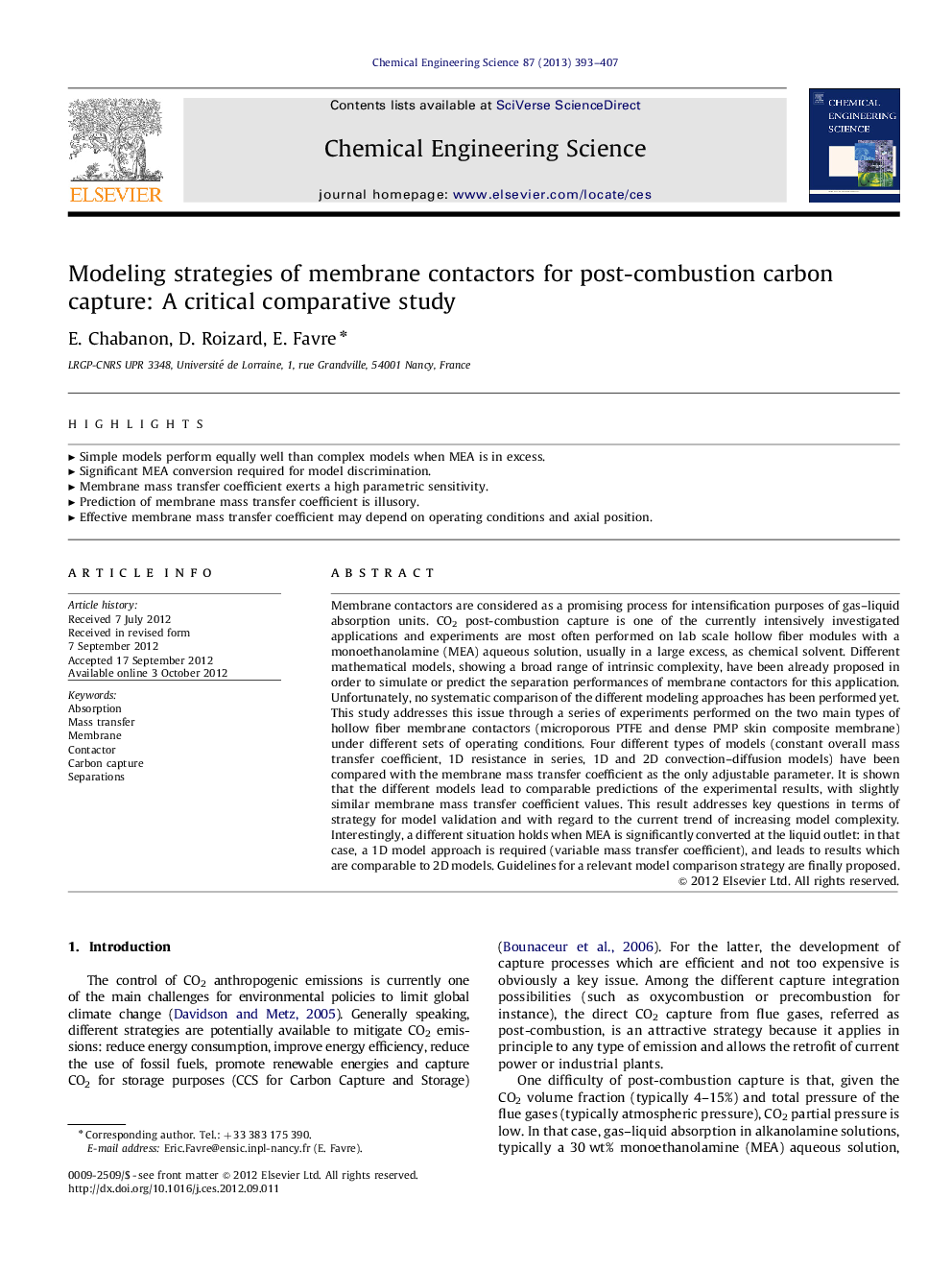| کد مقاله | کد نشریه | سال انتشار | مقاله انگلیسی | نسخه تمام متن |
|---|---|---|---|---|
| 155436 | 456894 | 2013 | 15 صفحه PDF | دانلود رایگان |

Membrane contactors are considered as a promising process for intensification purposes of gas–liquid absorption units. CO2 post-combustion capture is one of the currently intensively investigated applications and experiments are most often performed on lab scale hollow fiber modules with a monoethanolamine (MEA) aqueous solution, usually in a large excess, as chemical solvent. Different mathematical models, showing a broad range of intrinsic complexity, have been already proposed in order to simulate or predict the separation performances of membrane contactors for this application. Unfortunately, no systematic comparison of the different modeling approaches has been performed yet. This study addresses this issue through a series of experiments performed on the two main types of hollow fiber membrane contactors (microporous PTFE and dense PMP skin composite membrane) under different sets of operating conditions. Four different types of models (constant overall mass transfer coefficient, 1D resistance in series, 1D and 2D convection–diffusion models) have been compared with the membrane mass transfer coefficient as the only adjustable parameter. It is shown that the different models lead to comparable predictions of the experimental results, with slightly similar membrane mass transfer coefficient values. This result addresses key questions in terms of strategy for model validation and with regard to the current trend of increasing model complexity. Interestingly, a different situation holds when MEA is significantly converted at the liquid outlet: in that case, a 1D model approach is required (variable mass transfer coefficient), and leads to results which are comparable to 2D models. Guidelines for a relevant model comparison strategy are finally proposed.
► Simple models perform equally well than complex models when MEA is in excess.
► Significant MEA conversion required for model discrimination.
► Membrane mass transfer coefficient exerts a high parametric sensitivity.
► Prediction of membrane mass transfer coefficient is illusory.
► Effective membrane mass transfer coefficient may depend on operating conditions and axial position.
Journal: Chemical Engineering Science - Volume 87, 14 January 2013, Pages 393–407